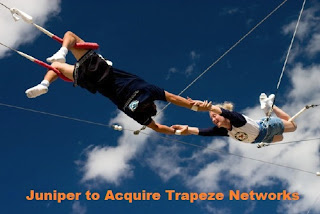It's been a while, and I wasn't able to access my blogs statistics service,
SiteMeter. Every time I go there, I receive the weirdest error message ever, "GIF Image 1x1 Pixels". I go the feeling that they quit business, or something.
Today, I was accessing
the following link on Global Voices Online, and guess what, I got the same error message again.
I went googling, and it came out that both SiteMeter and GVO are innocent,
it's Kaspersky that is messing out the web pages there.
So, in case you have Kaspersky Antivirus installed, go to the Anti-Spy settings, and either uncheck the "Enable Anti-Banner" altogether, or go to the Anti-Banner settings and add the sites you have problems with to the white-list there.
Tags:
Kaspersky,
Web Filtering,
Gr33n Data
 Today, Juniper Networks announced a definitive agreement to acquire Trapeze Networks, a technology leader in enterprise wireless local area network (WLAN) systems and management software. Read more here.
Today, Juniper Networks announced a definitive agreement to acquire Trapeze Networks, a technology leader in enterprise wireless local area network (WLAN) systems and management software. Read more here.